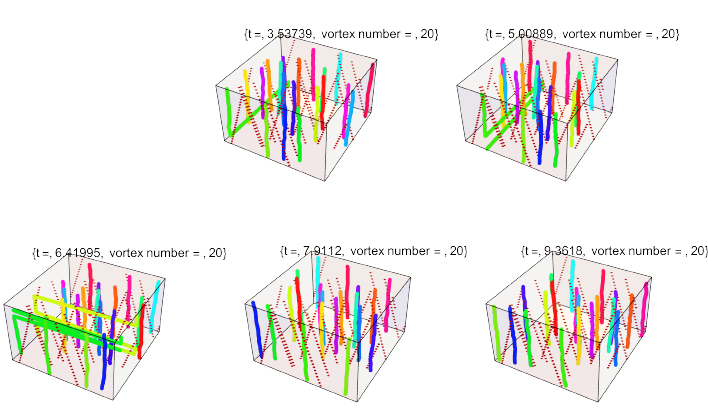PC6-3
Three-Dimensional Molecular Dynamics Method for Vortex pinning by Columnar Defects
*Masaru Kato1
- Department of Physics and Electronics, Osaka Prefecture University1
Vortex pinning is important for applications of superconductors and defects that show higher jc are investigated. There are several kinds of pinning centers in superconductors. For example, they are point defects, grain boundaries and columnar defects. Recently, Park et al. found that tilted and sprayed columnar defects show higher jc [1].
There are several simulation methods for vortex dynamics. They are microscopic method, phenomenological method, molecular dynamics method and macroscopic method. Especially the molecular dynamics method is still useful when we consider several thousands of vortices. However, usual molecular dynamics method can only be applicable to two dimensional systems, because a vortex is treated as a particle in two-dimensional space.
In order to investigate vortex pinning by tilted and sprayed columnar defects, we must consider three dimensional vortices. Extension of the molecular dynamics method to three-dimensional system was done by van Otterlo et al. [2]. They considered layered two-dimensional superconducting system and included bending force which comes from vortex core energy.
We extend this method to anisotropic superconductors, which have the layered structure. Also, we include a force form an external field.
Fig. 1 shows an example of time development of 20 vortices.
We will discuss effects of sprayed columnar defects on vortex pinning.
[1] Park et al. PRB 97 064516 (2018).
[2] van Otterlo et al. PRL 81 1497 (1998).
Keywords: Molecular dynamics method, Vortex pinning, Columnar defect, Bending force
